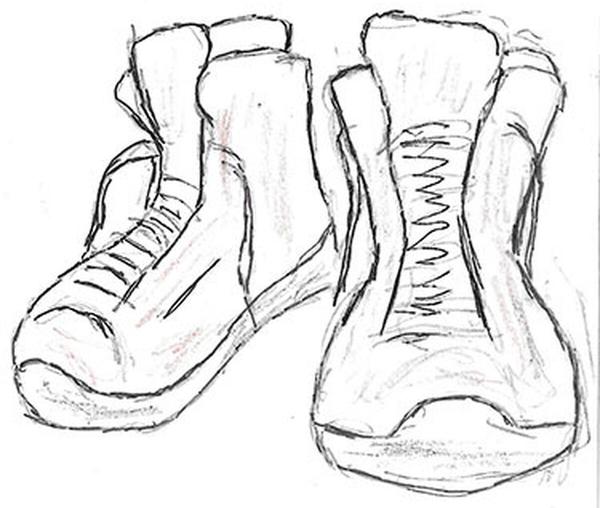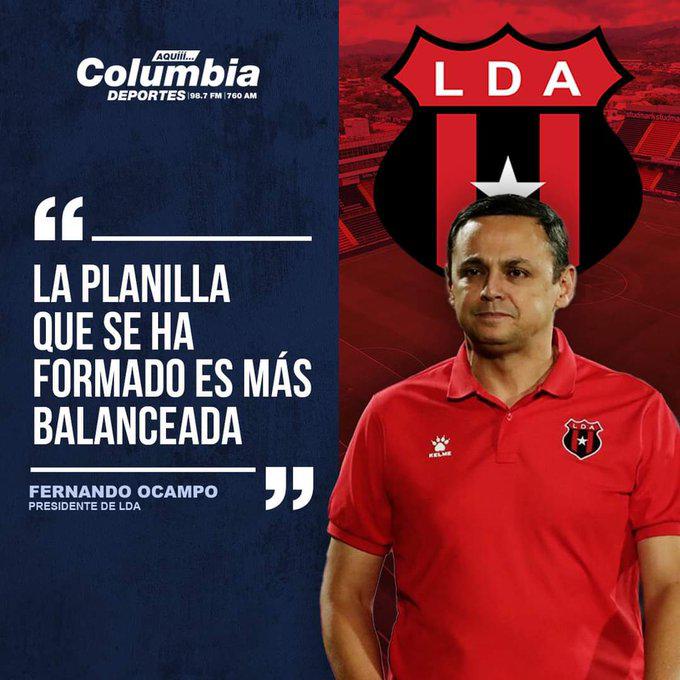Camino de Santiago: tips to prepare the getaway from Andalusia to Galicia
There are pages and pages written about the Camino de Santiago on how to equip yourself. The idea in these lines is to explain everything in a simple and practical way. From what to take, how to load the backpack, which route to choose and how to face this challenge.
The Camino de Santiago can be seen from a religious point of view or from a simply touristic or sports point of view. When the goal is reached, in the Pilgrim's Office they will ask us the motivation and they will give us a certificate according to it.
Religious or not, it is interesting to know something about these routes. The goal of every pilgrim is to reach the tomb of the Apostle Santiago, who according to tradition is buried in the Galician capital. The numerous paths that cross Spain to this city are the routes that pilgrims followed centuries ago. Some remain very faithful to the original layouts, many have undergone changes due to new infrastructures, others have emerged more recently.
The goal is clear and the recognition that the pilgrim who reaches it receives is the Compostela (if it is said that it is for religious belief). To get it, you don't have to go all the way, if you go on foot or on horseback, with the last 100 kilometers they grant it; if you go by bicycle, you need to travel 200 km.
The person who decides to face the Camino de Santiago must take into account that there are some routes that are easier than others. You don't have to be an athlete either, but it is convenient to prepare and equip yourself correctly, in addition to planning everything in advance. Here are several tips:
BEFORE THE ROAD
1. Time and route selection
It seems obvious, but the first thing is to decide when, how long and where.
As a general rule, completely completing the roads within Spanish territory implies spending at least 30 days on them. If you have less, it is convenient to complete sections or calculate the starting point based on how many days there are to Santiago.
After planning that, you have to see which route to choose and at what time. For example, August is a month with a lot of people and spring is ideal for doing the Vía de la Plata. Also, it is possible that in winter, in low season, there are some hostels that close or some trails with snow.
There are quite simple paths with good signage and smooth profiles, like the English or even the Portuguese from Tuy; others more demanding such as the Primitivo or the first stages of the North, with hard ups and downs. We must also take into account the services offered by each one of them: the Francés has vending machines, hostels and bars with great frequency, but for example the Vía de la Plata or the Portugués, especially between Lisbon and Porto, are very lonely .
The end of the stage greatly mark the difficulty of the routes. There are paths in which there is a lot of possibility to choose alternative endings, but in others not. The French Way passes through a multitude of towns and almost all of them have hostels, so we can avoid stopping in a crowded place and go a few more kilometers to avoid crowds. In others, this is different: if we decide to skip Mérida on the Vía de la Plata, we must bear in mind that the next stop with services for pilgrims is more than 16 kilometers away, in Aljucén. It may be a distance that not many are willing to take.
It is always a good idea to look at the different guides available, whether they are printed (everything signed by Antón Pombo is life insurance), websites (Gronze or Eroski are two of the most prominent) or in apps (Buen Camino de Santiago, Cno Santiago or Camino de Santiago in Galicia are recommended among the hundreds that exist). The guides always help to plan, see what we have ahead, avoid getting lost or even what each municipality offers us. We may hope that we will find a bar in the next village or a supermarket and be disappointed upon arrival.
Also be careful with the water: in the northern areas there will be no big problems, but there are other routes that are not so easy. We must be very farsighted and assess when to carry more water. Running out of it can take its toll on us, especially if it's hot.
It is interesting to ask the hospitaleros where we slept one night about the next stage. Most love to share what they know. It is possible that they recommend us to bring food or extra water, they can also inform us of incidents on the route (if there is any deviation) or even give us useful advice on lodging in the following days.
2. Training
Depending on who you ask, they will say that the Path is hard or easy. It should be clear that it is not running a marathon, but it is not a walk in the park either. What really wears you out of this experience is the accumulation: 15 days in a row walking an average of 20 kilometers can take a physical toll if you are not used to walking or do not go well equipped. Fortunately, there are few high mountain stages, but that does not mean that you have to cross mountains and that some profiles are complicated.

Therefore, it is advisable to do some preliminary filming before leaving: walk around your town several weeks beforehand to get your body used to it. Likewise, if we can go out with some weight in a backpack, the better.
It is essential to train with the same shoes that we are going to wear. Most of the pilgrims' problems come from shoes that are too new and poorly adapted to the foot. In the end they will cause blisters, poor support and the dreaded tendonitis or a worse injury.
3. Documentation
To complete the Camino de Santiago you must carry your ID and health card, as identification elements and to be attended in case of medical necessity.
It is advisable to go to an association of Friends of the Camino to buy a Credential, which is the document that indicates that we are pilgrims and that will allow us to access the hostels. They usually cost about 3 euros. In any case, if we do not achieve it before leaving, we can always obtain it on the same Path. Many tourist offices, churches or even the same hostels can offer them.
In these times of pandemic, it would not be a bad idea to carry a Covid passport that shows that we have been vaccinated or that we even have recent negative PCR tests.
4. Equipment
This is very personal. Here is the basics:
Clothes: Of course, you should wear sports or comfortable clothing: a couple of breathable t-shirts (short or long sleeves), a sweatshirt and one or two shorts or removable pants. If the forecast is for cool weather, thermal shirts are very useful and, of course, more warmth, such as jackets.
Shoes: It is advisable to wear trekking shoes since they help a lot to hold the foot and protect it in case of tripping. It is also a shoe that cushions the footprint a lot. Many are made of materials that protect from rain and puddles.
Some people wear other types of sports shoes. It is possible, as long as the profile of the stage allows it. It is not advisable to wear soles without grip if you are going to go over difficult terrain.
As for socks, it is recommended to use several technical or seamless pairs. A normal sock can cause blisters from rubbing.
How to Become an EKG TechnicianStart Your Career in This Rapidly Evolving Field http://t.co/JDQ7KmO1 holter ecg :O
— Rhett Meredith Fri Sep 16 23:16:13 +0000 2011
Backpack: It must be a hiking backpack with a capacity of at least 40 liters. These backpacks help protect the back and support weight with less problems. Many incorporate a waterproof cover. If you don't bring it, you should buy one.
Sleeping bag: It is a good idea to take a thin one if it is summer or a warm one if it is winter. It is good to use them in hostels because they will insulate and protect you, especially for those who hate to touch the mattresses of the bunk beds (not all places provide disposable covers).
First-aid kit: Many people say that you should take one, but keep in mind that in almost all the towns where you are going to spend the night there are pharmacies. Unless you have prior treatment, it is not convenient to overload yourself with medical supplies and buy them if necessary. The only thing that is worth taking is a bottle of Cristalmina, a sewing needle and thread. They will serve to cure the dreaded blisters in case any appear.
Anti-Covid kit: In times of pandemic, it is advisable to carry a mask for indoors, a bottle with hydrogel and a sprayer to disinfect and disinfect ourselves.
Extras: You must bring a poncho or waterproof clothing; some sandals for the shower and rest your feet after the journeys; a hat and sun cream. It's also good to have a flashlight, utility knife, and your own eating utensils. The canteen is essential.
The two sticks help a lot to distribute the weight on climbs and descents as well as providing security in complicated sections. With only one it is worth, although in this case it is advisable to change hands from time to time.
5. Tips for preparing the backpack
There are many types of backpack and it would be absurd to say how to distribute the load in detail. However, there are several important rules:
ON THE ROAD
1. Before starting the march
Always take time to observe the route that we are going to follow on the day. As indicated above, there are many printed guides, apps and websites with a large amount of information about the routes, profiles, etc.
It is important to take reference points on the maps, that is, to know how many towns we are going to pass through to get an idea of our position and how far we are missing. It is convenient to review the information on what services each locality offers: pharmacies, shelters, clinics, supermarkets, bars, etc. If we observe that there is little civilization on our route, we must assess whether it is convenient to bring extra food and drink to the usual.
It is not advisable to go overloaded with provisions, except in cases of long stages without intermediate services. Yes, it is good to take at least a liter of water with us (refilling it whenever we can) and something to eat (some fruit, nuts... sugar cannot be missing).
Planning the departure time is very important. If the stage is very long or it is very hot, it may be advisable to leave early.
Finally, it's time for physical preparation. Stretching helps a lot to tone the muscles. It is not bad to spend some time on this before the march. Another trick for the feet is to put Vaseline on them before putting on our socks: you will hydrate them and help the blisters take longer to appear.
2. During the walk
The Camino is not a competition. You don't have to run, but you do have to enjoy it as much as possible. As a general rule we are going to be walking for several days in a row and it is convenient to dose the forces. If we start very strong and fast, it is possible that in the end, if the stage is hard or long, it will take its toll on us.
The ideal walking pace for everyone is one that allows you to walk while talking without suffocating. Going more forceful can cause more fatigue, but going slower can also harm us.
That said, it will be normal to find the typical pilgrims who think more about getting to the hostel as soon as possible to ensure a bed than enjoying every moment (they abound in Galicia, especially in the Jacobean Year). The routes usually go through places with very beautiful details that can go unnoticed if we go fast or enclaves of great charm where it is often worth stopping or even taking a slight detour if necessary. Talking to the people of the towns if they give us conversation, listening to the birds, admiring the transepts, entering the churches and hermitages, enjoying the silence... there is a lot to do along the route and it is almost always worth it. The path is what fills the pilgrim's journey. If it is done in another way, you can end up being aware that most of the day we are in a hostel dozing.
Apart from enjoying yourself, the key is not to get lost and for that the yellow arrows and the scallops will be our friends. We will find them on milestones, on tiles, painted on signs, on rocks, we will see drawings made of stone indicating the way... In theory it is easy, you have to go looking for them to move forward. The problem is that they are such long journeys that sometimes they can have signaling problems. The usual thing is to always follow the most logical path. For example, if we are going along a straight path and we come across a crossroads and we do not see any indication, the normal thing is to continue straight ahead. On the other hand, if we haven't seen a brand for too long, we should start to worry and ask people to see or consult a guide. The need to always look for these visual orientations means that it is not recommended to go out at night, since the less light, the greater the probability of not seeing a small arrow in a corner.
Stops of about 15 minutes every two hours of walking help us recover and make the excursion more bearable. We must sit down sometime to rest our feet. There are those who even take the opportunity to eat if they catch him at a good time. Of course, you must not let the body get cold.
The end of the stage is always indicative. It is not an obligation. Many times they coincide with the towns that offer hostels and more services, others with the places of greatest interest. Each one follows his Path and it is possible to alter these conclusions.
The credential, in addition to accrediting us as a pilgrim, also includes our route throughout the journey. It's our walking record. It consists of some boxes in which we can put some stamps that have the places we are going through: a hostel, a bar, a hermitage... In principle, it only works with one each day, but there are those who collect and that is there are some with very interesting designs. When we are 100 kilometers from Santiago, we will have to put two stamps a day (for example, one where we have breakfast and another at the hostel where we stop).
3. After the walk
We have completed the daily objective. We have reached our goal. It is time to look for accommodation where we can rest and clean ourselves. Almost all stage finishes usually have public hostels (cheaper) and other private accommodation options (private hostels or hostels). Sometimes there are no municipal ones and we have to look for other more expensive alternatives. For this reason, it is convenient to review the information in the guides.
The first thing the hospitalero will ask for will be our Credential and DNI. If we do not have the card that accredits us as a pilgrim, he can deny us passage.
Access to the shelters is on a first-come, first-served basis, with preference given to those who go on foot over those who go by bicycle. Likewise, people with disabilities also go earlier, although it is possible that there are reserved beds.
The pilgrim must rest after the excursion day. Again, stretching helps on arrival.
You have to take care of your feet, checking if we have blisters (and treating them if they have appeared) and trying to ventilate them with comfortable and cool shoes.
As for the legs, if we have them very loaded, it is advisable to relax them by placing the feet up. Rosemary oil helps a lot too.
Finally, you have to rehydrate, especially if we have suffered a lot of heat along the way.
As a general rule, hostels tend to have quite strict closing hours: around 10:00 p.m. everyone is asked to go to bed, the lights go out and silence is requested. Respect is essential in these places.
If you're one of those people who has a hard time with night noises (read: snoring): don't forget some earplugs.
AT THE END OF THE ROAD
We finally reached Santiago. The entrance is not usually very pleasant, arrivals to the cities are almost always very heavy. Streets and avenues until entering the center. Already in the historic center of Compostela things change. The first objective is to look for the Plaza del Obradoiro and admire the spectacular exterior of the Cathedral. It seems as if the surrounding buildings themselves embraced the pilgrim. It is a place of emotions and even reunions with our adventure companions.
After this, it is best to go to the Pilgrim's Office (Rúa das Carretas, 33). The procedure to request the Compostela is the last torture that awaits us. In recent years, the number of pilgrims arriving is huge and there were always long queues at the office. The solution they have given is to grant limited appointments. If you arrive early you can take a number for that same day; if you arrive late or there are a lot of people, you will have to ask for another day. It goes without saying that this bores many and it is not uncommon for pilgrims to give up.
If you make the appointment, the office will ask for your Credential and verify that you have traveled the last 100 kilometers. After asking your motivations, they will give you the Compostela (religious) or a piece of paper that says you have done the Camino (others). Likewise, the Credential receives the last seal, that of the Cathedral of Santiago.
With the bureaucracy over, the tradition is to visit the saint in the Cathedral and give him a hug.
There are those who settle and stay here. Although there are also some who decide to go to Finisterre and Muxía, another three days on foot, to complete the arrival at the end of the world. Two other certificates can be obtained in these towns: the Fisterrana and the Muxiana




